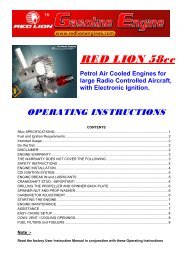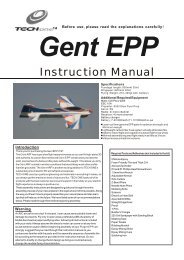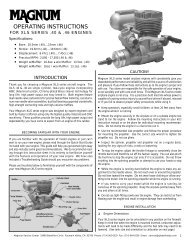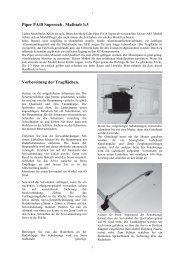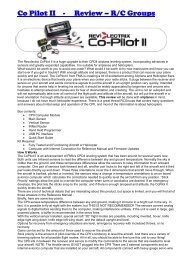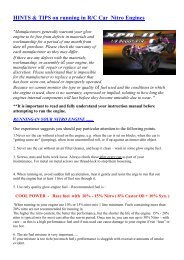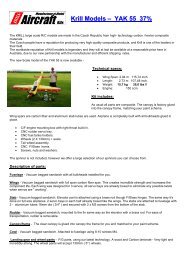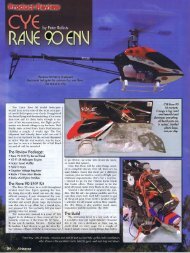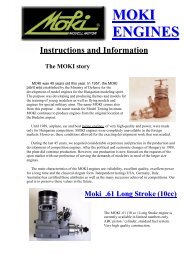You also want an ePaper? Increase the reach of your titles
YUMPU automatically turns print PDFs into web optimized ePapers that Google loves.
Along with undercarriages, flaps can be quite a challenge to rig in an appropriate and reliable manner. A review <strong>of</strong>possible configurations might be a good way to start.Plain flaps - hinged in a similar war to ailerons. These are the simplest to set up. Hinges can be <strong>of</strong> the flat plasticwith the metal pin variety, Robart Hinge Points, or plastic covering material on small powered models or gliders.Spotted flaps - more complicated, but can be more effective than plain flaps. The hinge line is below the wing sothat as the flap goes back and down a slot opens up between it and the wing. Some <strong>of</strong> the airflow goes through theslot producing more lift than does the plain flap. Hinges can be made from two control horns with 8 BA bolts as thehinge point ( as shown below). Robart Hinge Points can be also be used as flap hinges.The most common effect <strong>of</strong> flap operation commented on ( complained about ) is the pitch up usually experiencedon deployment. Flaps are fitted to enhance low speed handling so throttling back and slowing down before loweringthe flaps may reduce the pitch up. Radios with flap/elevator mixing almost completely eliminate this problem. Flapsincrease lift and therefor drag, making them useful for short, steep approaches. Airspeed need to be watched toprevent overly high rates <strong>of</strong> descent leading to heavy landings.Flap LinkagesThe simplest flap mechanism is flaperons which require an aileron servo in each wing mixed electronically t<strong>of</strong>unction as flaps as well. This set-up is commonly seen in fun fly machines, but any plane with strip ailerons can beset-up this wayThe two cases below show the conventional inboard flap/outboard aileron set-up. Set-up such as theseallow flaps with broader chords. I have read that flaps ( 25 - 30 % <strong>of</strong> wing cord ) produce smaller pitch upsthan narrower ones. Only driving the flaps via a torque tube. Air loads on flap surfaces can be quite highrequiring push rods to be straight and rigid. Ball joints can be used to minimize the "slop" that sometimesoccur with push rod end fittings.




